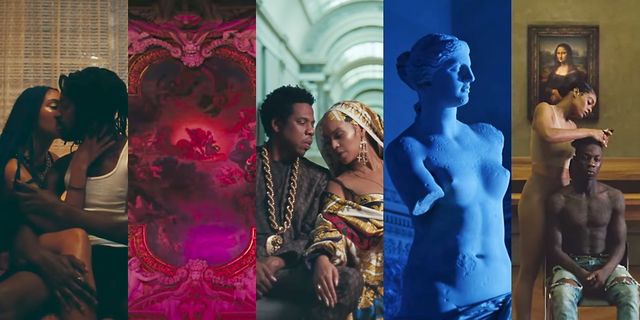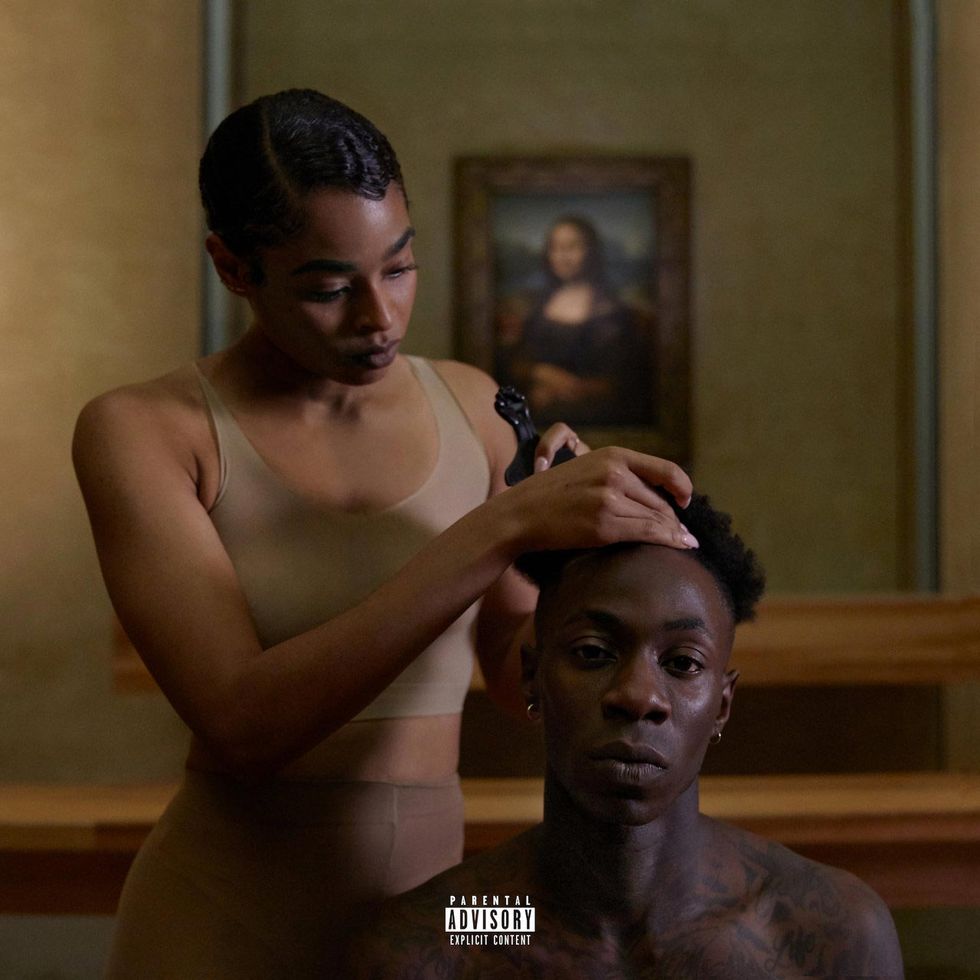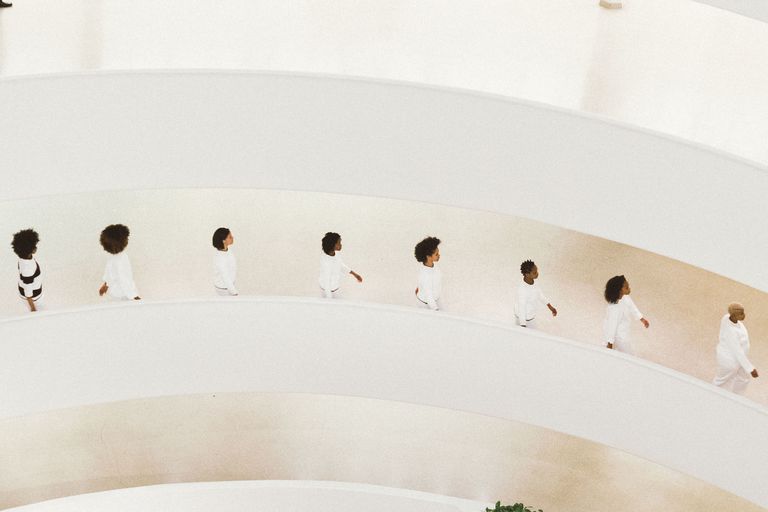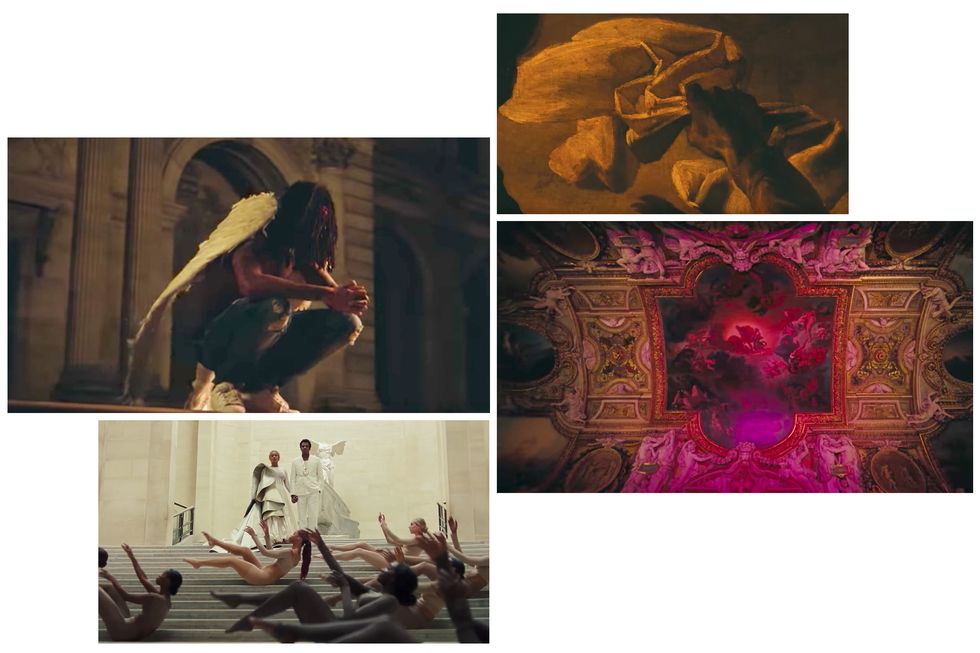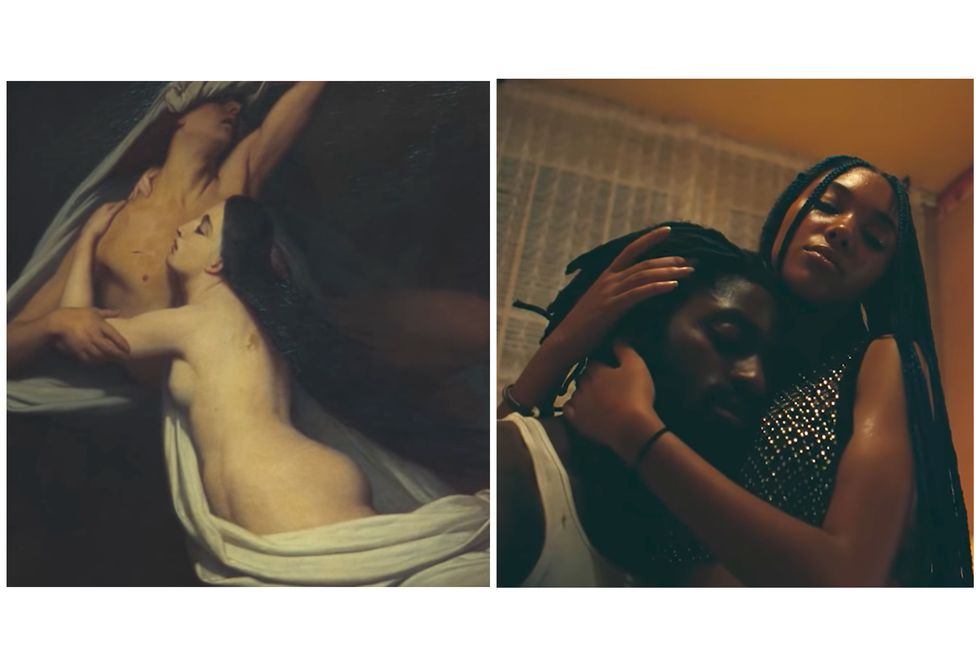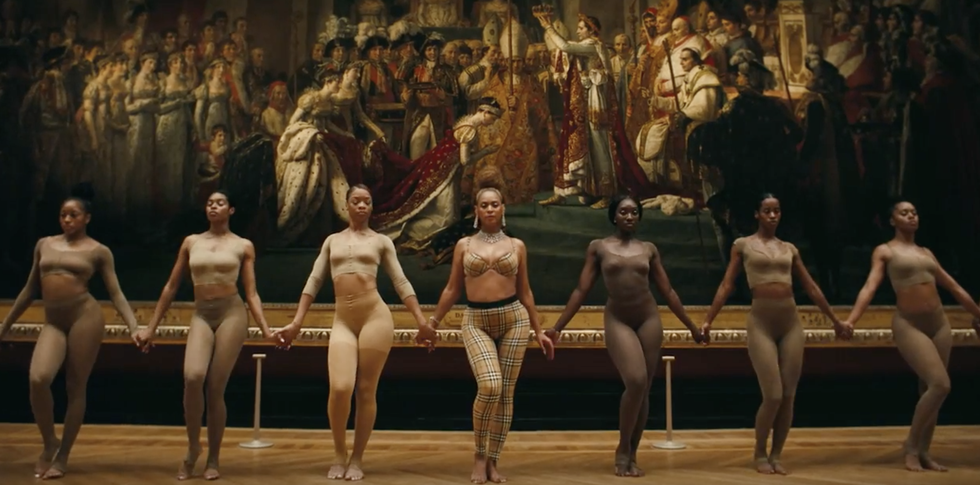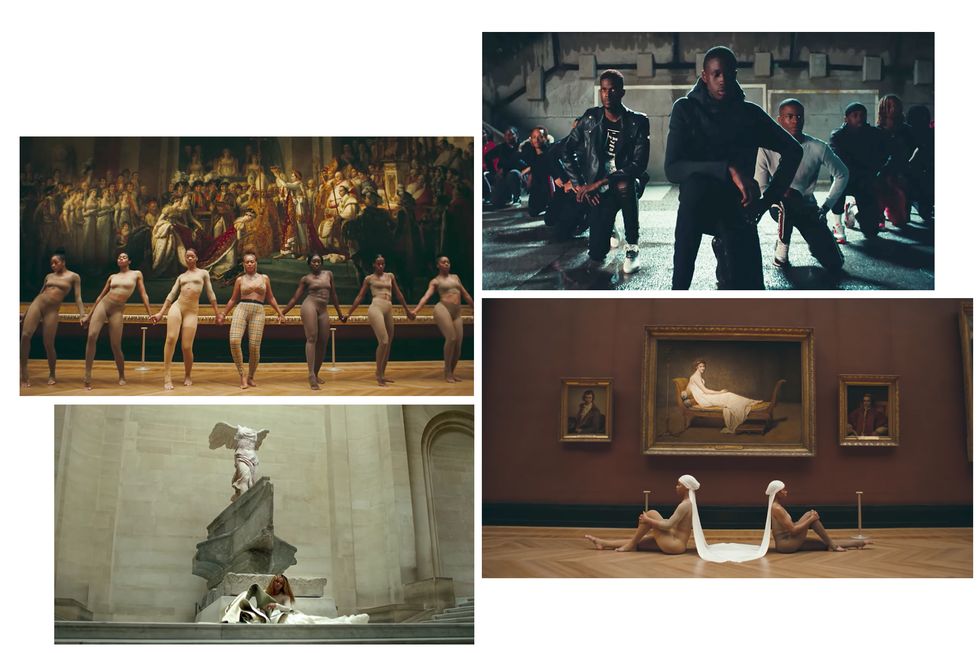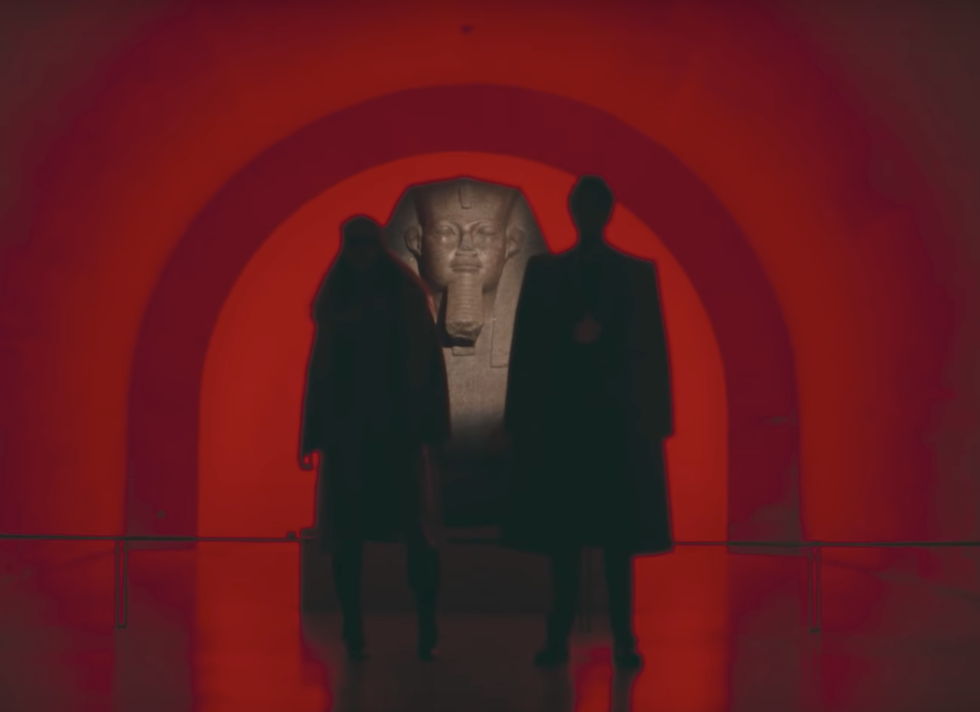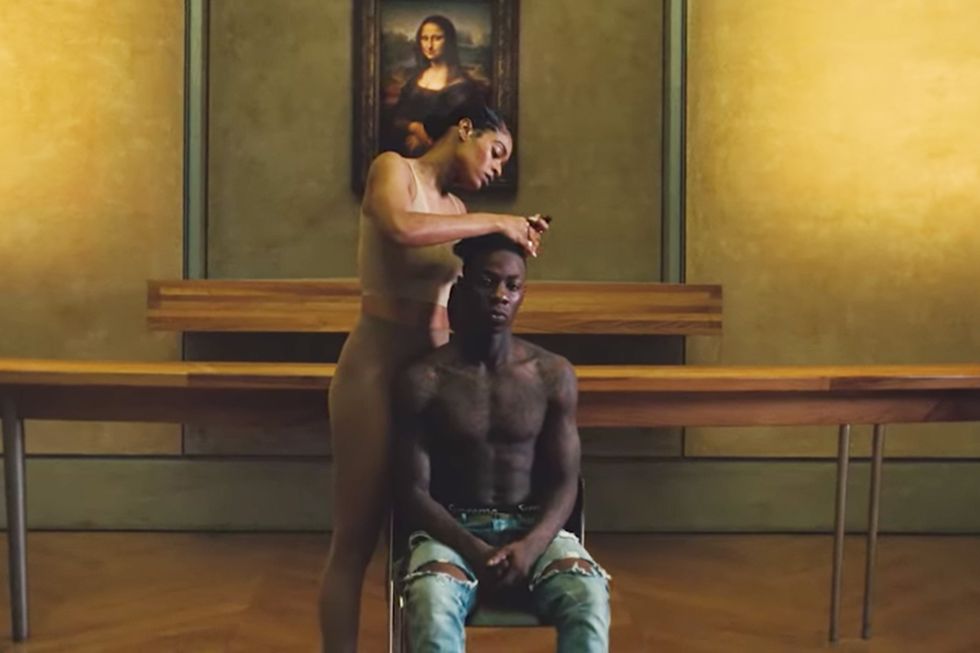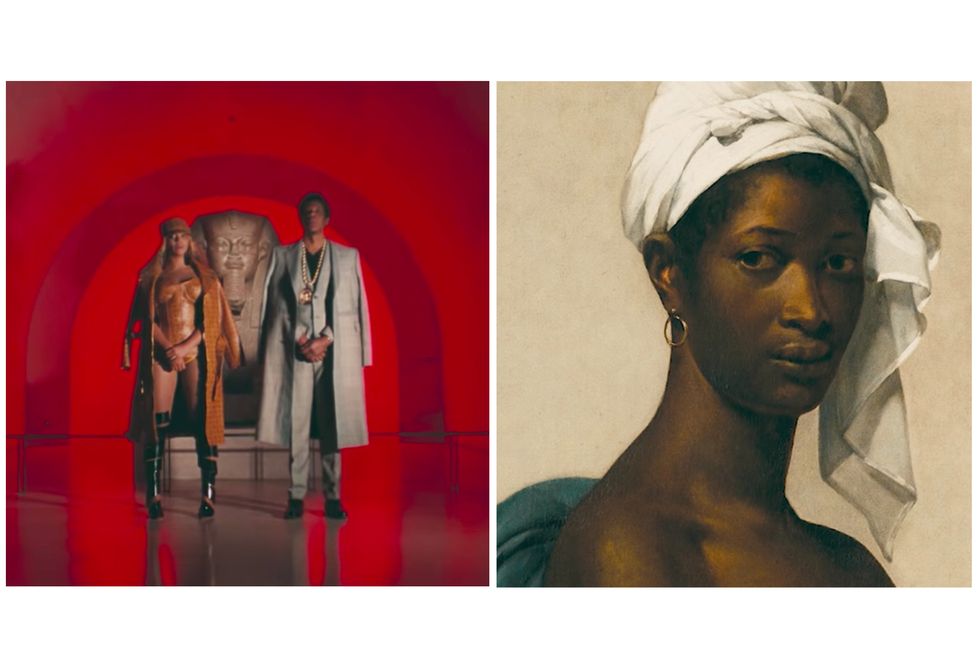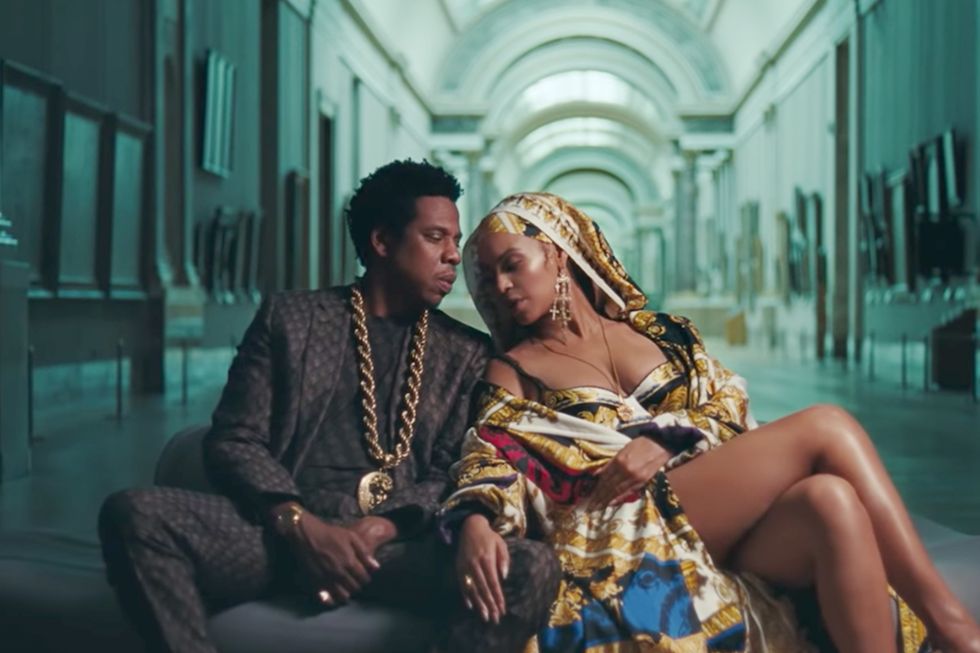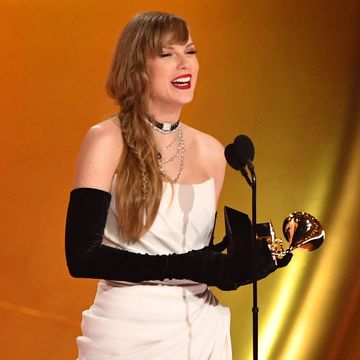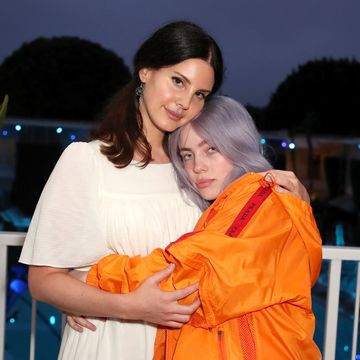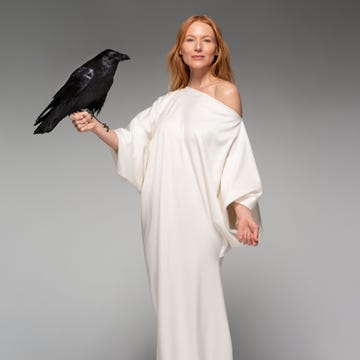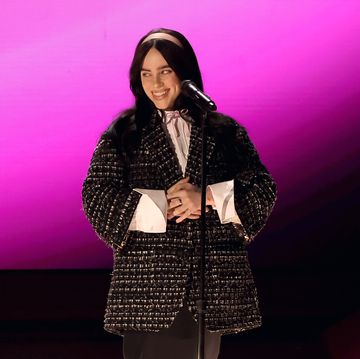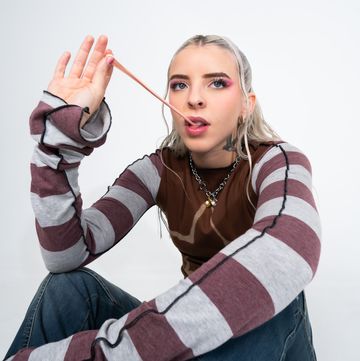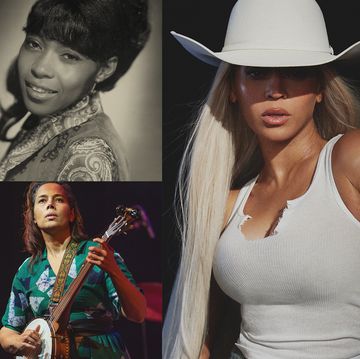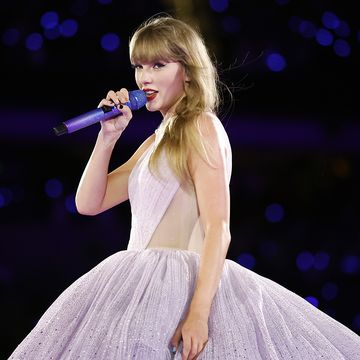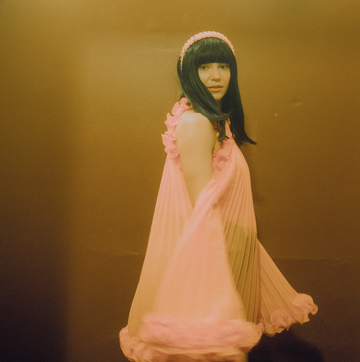Where were you when The Carters' Everything Is Love dropped? I was taking a nap. I can't explain why I woke up other than to say I was compelled; perhaps I felt the tectonic shift of Beyoncé doing a thing. Regardless, the stunning album cover was the first visual I saw.
It's an image of a Black woman (Jasmine Harper) picking out the tightly coiled 'fro of a tatted up Black man (Nicholas $lick Stewart) with the Mona Lisa far enough in the background to be blurred, though recognizable. I immediately connected that imagery to photographer Deana Lawson's work.
In April, artist and curator Tara Fay Coleman had her hair braided within Lawson's exhibition at the Carnegie Museum of Art. I was on hand to shoot photosof the performance art piece, which Coleman described as "a reference to Deana's statement about claiming spaces. We will make the gallery our own, and tell a story about black womanhood, and an experience that is important to our culture." Aptly, hip-hop and trap music filled the halls of CMOA during the entirety of Coleman's performance. Coleman made the Forum Gallery our home that night, our comfort paramount to any ogling spectators.
Black artists claiming space with visual art that centers Black people, both within institutions we've historically been omitted from as creators and within the spaces we carve out for ourselves, is a practice I call "Blackness as art." That kind of disruption is not a concept the Knowles-Carter empire or their collaborator Pharrell, who produced "Apeshit," are new to exploring. Jay-Z implored, "Put some colored girls in the MoMA" in 2001’s "That's My Bitch" (the track also includes a reference to the Mona Lisa—more on that in a bit).
Two years later the Marina Abramović-inspired video for "Picasso Baby" (which also references the Mona Lisa—hold tight) saw Jay present hip-hop and himself as fine art for six sustained hours at the Pace Gallery. The performance art film features Abramović, and Black artists Mickalene Thomas, Kehinde Wiley, Rashid Johnson, Ouattara Watts, Lorna Simpson, Wangechi Mutu, and Fred Wilson, amongst others. In May of last year, Solange performed An Ode To at the Guggenheim Museum, a ceremonial tribute to Black womanhood soundtracked by her album A Seat at the Table.
Pharrell has had a relationship with the art world for years, most notably his collaborations with Takashi Murakami, FriendsWithYou, and even his 24-hour-long “Happy” video—a performance art piece in every sense of the term. The newest addition to this conversation, then, is the second visual I saw from The Carters on Saturday: the "Apeshit" video, the source of the album's cover photo.
Shot both in and outside of The Louvre Museum in Paris, "Apeshit" is art nerd eye candy, optically exquisite, and metaphor-heavy.
Even taking into consideration The Louvre's boasts of 500 on-site shoots a year, it's arresting to witness Beyoncé and Jay use this storied institution as a backdrop for a braggadocious, expletive-filled, goes-hard-in-the-whip trap song. There are numerous extreme close-ups of priceless paintings it’s usually difficult to get even within fifty feet of in person. They’re interspersed with images of a spectrum of brown skin, at times mimicking poses in the works, but mainly dancing, swaying, and caught in moments of intimacy, abandon, and defiance.
There's an almost-disregard for the art, or a bored, perfunctory acknowledgment of it at best, in favor of these audacious and unrelenting displays of Black love and brilliance. It's Bey, Jay, and their gorgeous cast that command attention and get affectionately treated as the invaluable art within a building that houses the largest collection of art in the world, but not nearly enough by Black artists.
"Apeshit" opens with the camera panning over a shirtless, dreadlocked Black man in sneakers and ripped jeans, white angel wings draped across his back. Cut to the immaculate ceiling of the Galerie d'Apollon, depicting Apollo's battle with Python: a contemporary Black angel to mirror the angelic figures framing the battle, and potentially to juxtapose the "he was no angel" rhetoric used to dehumanize Mike Brown and deny Black boys’ and girls’ innocence.
It’s a nod to the ongoing battle we’ve been waging for our humanity. This opening figure partners with Beyoncé as a visual foil to Winged Victory of Samothrace, the headless, pale marble goddess that serves as a centerpiece of the Denon wing on any other day, but is treated as a mere accessory here. Bey is spitting bars in about twelve layers of fabric, which billow around at her command; it’s not necessary to pay attention to anything else, because she’s the goddess in the room.
There's a lot more symbolism to unpack. A Black couple cradle, kiss, and comfort each other on a bed. A quick cut to the lovers Francesca and Paolo, from Dante’s Inferno, supplies the reference point, but it’s more a Deana Lawson moment than an Ary Scheffer one. Bey and Jay gaze at each other and hold hands—at one point Jay even kisses his wife’s hand before rapping along to her lyrics. “Apeshit” doesn’t lack moments of Black love. But the couple mimicking Francesca and Paolo feel different; their moment of intimacy feels defiant amongst increasing chaos, like a survival technique.
The Carters stay in conversation with the art around them and the contemporary context. A group of Black men kneel as Jay-Z admonishes the NFL—undoubtedly in support of Colin Kaepernick and in opposition to the NFL's newest national anthem policy. He seems to pay momentary respect to Le Radeau de la Méduse, in which there’s a brown-skinned man waving to the horizon for help, a survivor. Beyoncé rolls her hips in formation with a chorus of synchronized Black women of all hues of brown in front of The Consecration of the Emperor Napoleon and the Coronation of Empress Joséphine.
Yes, that Napoleon, the pillager, who, for years during his reign as emperor named the museum after himself and filled it with artifacts he seized in war. Bey positions herself directly under the crown meant for Joséphine. Two Black women sit before David's Madame Récamier, linked by a long, white head wrap, or durag, depending on your levels (Solange's impact). The still, coolly lit, and armless Venus de Milo precedes Stewart, the man on the album cover, who in contrast is contorting his long, fluid arms above his head, a dance style he calls bone breaking. Bey, too, winds her waist in front of Venus, ignores it, upstages it. Beyoncé, a Black woman, is the standard of beauty here.
Most striking, however, is the usage of the Great Sphinx of Tanis, the Mona Lisa, and the Portrait d'une femme noire (Portrait of a Negress). The Sphinx, famously missing its Jackson 5 nostrils, gets a noticeably different treatment to the other statues. The only African artwork in the entire video, the Sphinx appears in communion with the dancers instead of fading into the background. In one shot, Bey and Jay flank the imposing figure as if they're its guardians, the spotlight reserved for the Sphinx itself. Reverence, paid.
The Mona Lisa is, as aforementioned, relegated to the background of the scene that became the Everything Is Lovealbum cover: a Black woman uses an afro pick to ready a Black man's fluffed-out mane for parting and braiding. This tender act, an extremely familiar one to almost any Black person with hair and a mama or auntie, is the main focus and the main statement.
The painting wasn’t chosen on a whim. Besides Bey and Jay famously snapping a selfie in 2014 with the Mona Lisa, and the couple of times Jay has referenced it directly (“sleeping every night next to Mona Lisa / The modern day version with better features” in “Picasso Baby,” “If Picasso was alive he woulda made her / That’s right, n---a, Mona Lisa can’t fade her,” in “That’s My Bitch”), it is one of the most valuable, and certainly the most famous pieces of art in the world. Highly esteemed, ostentatiously protected (in the Louvre, it sits behind bulletproof glass), it brings to mind a snippet of Malcolm X's speech at the funeral of Ronald Stokes, which Beyoncé included in Lemonade’s visual album: “The most disrespected woman in America is the Black woman. The most unprotected person in America is the Black woman. The most neglected person in America is the Black woman.” It made me wish Bey and Jay had kept their backs turned to her, instead of facing her at the end of the video. I’d have preferred her uncentered, in the background: a rejection of status on those particular terms, in conjunction with a song that says fuck the NFL, fuck the Grammys, and fuck the fame.
The penultimate work shown is Portrait of a Negress, the only featured artwork that depicts a Black woman. The lens focuses on her face and expression, but excludes her exposed breast: an offering of protection and esteem, perhaps, to a woman who was almost certainly a slave before Marie-Guilhelmine Benoist painted her and then again when colonial slavery was reinstated after Napoleon’s rule, two years after the painting was completed in 1800.
I wanted a longer moment of gravity with this work amongst the song’s frequent boasts of “Can’t believe we made it.” Because I don’t actually think The Carters are implying that being rich and famous enough to claim The Louvre as their own is “what [they’re] thankful for.” I don’t want that to be the implication. Many people don’t consider museums to be “for them”—the level of opulence and privilege isn’t relatable. This is frequently compounded for people from the African diaspora, who have to contend with the fact that many European and North American museums display art that was directly plundered from African countries or purchased from collectors who obtained it illegally, or continually hire white curators to handle such collections.
In March, France's president Emmanuel Macron met with President Patrice Talon of Benin to discuss the repatriation of art to African nations. Macron has been quoted as saying “African heritage can’t just be in European private collections and museums,” a stance that directly opposes that of the French Ministry of Culture. The current director of the Louvre, Jean-Luc Martinez, has yet to comment publicly. Although there is no white gaze in “Apeshit”—not even the white figures in the art have prominence over the unapologetic Blackness—it feels better to watch it hoping The Carters are attempting to make a statement on these ongoing spoils of colonialism.
I also wonder what a video treatment like this one would’ve looked like in The Studio Museum in Harlem, the Zeitz Museum of Contemporary Art Africa in Cape Town, or the Smithsonian’s National Museum of African American History and Culture. Or amongst work by contemporary Black artists like Kerry James Marshall, Mickalene Thomas, Zanele Muholi, and Vanessa German—work curated by Black curators, who are woefully underrepresented. Or Kehinde Wiley, who frequently places his Black subjects—dressed in everyday clothes like basketball shorts, hoodies, and Timberland boots—in settings previously reserved for white aristocrats and monarchs. There are museums, galleries, performance venues, and more that I frequent in my own city that open their doors to and prioritize the work of Black artists every day. We don’t need to be accepted into any hallowed halls of privilege to continue being brilliant, even if we’re simply doing so to disrupt.
Is that placing too many expectations on Bey, Jay, and Ricky Saiz, the video's director? That's possible—but that's the sport in dissecting visuals so ripe with metaphoric, luscious imagery, which Beyoncé has delivered in multitudes since the genius of Lemonade. But our art forms don’t need to be invited into spaces that kept us out for decades or even centuries to be legitimized. Black art doesn’t need “approval” by the mainstream art world. Blackness is an art form. That’s what I call makin’ it.
